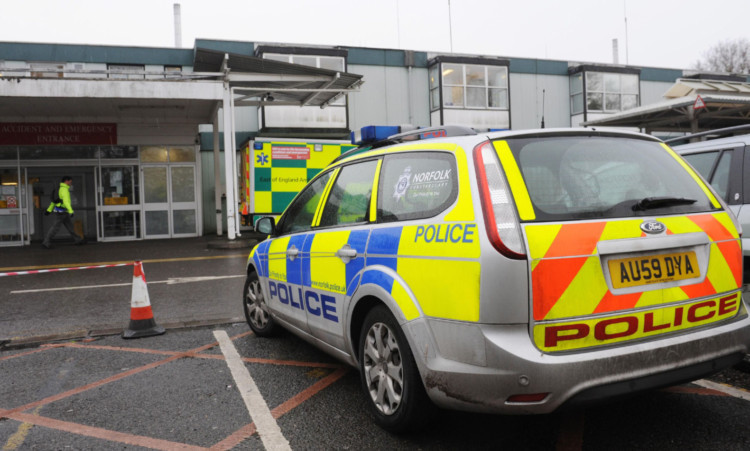
Hundreds of police cars are being used to transport sick patients to hospital because ambulances are “delayed”.
A Sunday Post investigation has revealed one north east police force took patients to hospital almost every other day.
These cases are believed to be the tip of the iceberg with horror stories emerging including one patient dying in the back of a police car.
But the Government last night hit back with the claim that there is “no evidence” that this is happening.
Steve White, of the Police Federation of England and Wales, said: “Many officers are called to incidents where emergency medical care is needed but are left waiting for long periods more than an hour in some cases for paramedics to arrive, only to be told that there are none available. They are then left to convey the casualties to hospital.”
A Freedom Of Information request has revealed between September, 2012, and October, 2013, Cleveland Police transported patients to hospital on 164 occasions.
Among the busiest periods was last December when 19 patients were transported by officers.
Barry Coppinger, Cleveland’s Police and Crime Commissioner, said the figures would have been higher had a directive not been issued to stop police engaging in the practice. The Labour commissioner said: “Police vehicles are unsuitable and unequipped. It not only puts undue stress on the patient, but also the officer.
“The downward trend in incidents from September to October relates to a policy change by senior officers within the force and a directive issued that officers should not transport patients to hospital unless there is an immediate risk to life.
“However, there were five occasions in November of officers being forced to take patients for urgent treatment due to ambulance delays.”
Joel Byers, secretary of the North East Ambulance Service branch of Unison, said huge cuts in Ambulance Trust budgets was the key cause.
He said: “It’s totally unacceptable. It is a huge danger to the police and the patient.”
The revelations come after Cleveland Police Federation bosses revealed police drivers had faced investigations after patients they transported to hospital died.
And leaked police log entries from the north east revealed the scale of the problem.
One entry from July read: “Ambulance control requested police attend a report of 14-year-old girl having taken an overdose.
“As there was no ambulance available the injured person had to be taken to hospital by police.”
Eight police forces across the north of England refused to reveal the scale of the problem by snubbing our Freedom Of Information requests.
A Department of Health spokesperson said: “Reports that police cars are acting as ambulances on a daily basis are completely untrue and there is no evidence that this is happening across the country.
“Individual Ambulance Trusts make decisions about how to meet local demand, while ensuring the best outcome for patients.
“This can involve working with other emergency services.
“Police cars are never used for patients in emergency or life-threatening situations.”
A North East Ambulance Service (NEAS) spokesman said: “NEAS is one of the highest performing services in England, attending 80% of call outs within 8 minutes.
“We’ve provided officers with laminated ‘help’ cards, which advise on alternatives to an ambulance should the injury not be an emergency.
“The safety and well-being of the general public is of paramount importance to both NEAS and the police force.”

Enjoy the convenience of having The Sunday Post delivered as a digital ePaper straight to your smartphone, tablet or computer.
Subscribe for only £5.49 a month and enjoy all the benefits of the printed paper as a digital replica.
Subscribe